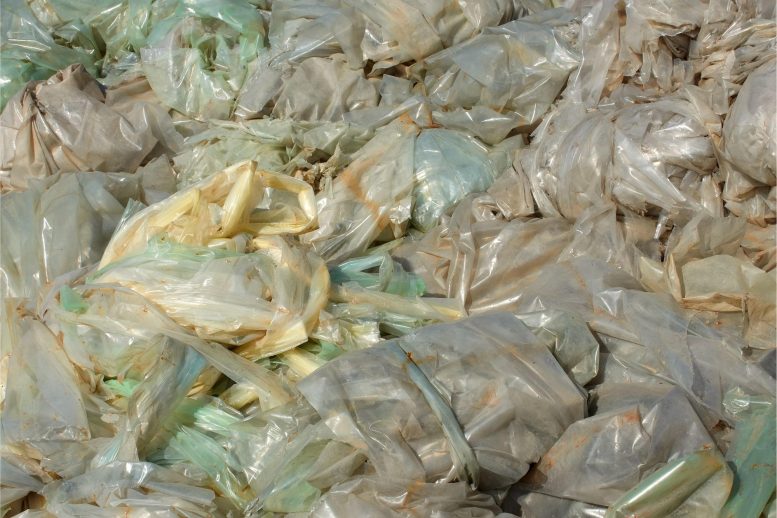 A new method developed by researchers at the University of Adelaide could potentially transform polyethylene waste into valuable chemicals using light-driven photocatalysis and solar energy. This innovation has the potential to significantly impact sustainable waste management and contribute to a circular economy. The international team of scientists has found a way to use polyethylene waste as a raw material and convert it into valuable chemicals through a process called light-driven photocatalysis. The findings of this research have been published in the journal Science Advances.
A new method developed by researchers at the University of Adelaide could potentially transform polyethylene waste into valuable chemicals using light-driven photocatalysis and solar energy. This innovation has the potential to significantly impact sustainable waste management and contribute to a circular economy. The international team of scientists has found a way to use polyethylene waste as a raw material and convert it into valuable chemicals through a process called light-driven photocatalysis. The findings of this research have been published in the journal Science Advances.
Professor Shizhang Qiao, Chair of Nanotechnology and Director of the Centre for Materials in Energy and Catalysis at the School of Chemical Engineering at the University of Adelaide, led the team in the publication of their findings. According to Professor Qiao, the team has been successful in upcycling polyethylene plastic waste into ethylene and propionic acid with high selectivity using atomically dispersed metal catalysts. The method involves utilizing oxidation-coupled room-temperature photocatalysis to convert the waste into valuable products with high selectivity. Nearly 99 percent of the liquid product is propionic acid, addressing the challenges associated with complex products that require separation. The process uses renewable solar energy instead of industrial processes that consume fossil fuel and emit greenhouse gases. Four key components are employed in this waste-to-value strategy, including plastic waste, water, sunlight, and non-toxic photocatalysts that harness solar energy and boost the reaction, with titanium dioxide being a typical photocatalyst with isolated palladium atoms on its surface.
Polyethylene waste poses a significant environmental and ecological threat as it constitutes the largest proportion of all plastic waste and is primarily disposed of in landfills. Most of the plastics used today end up being discarded and accumulate in landfills. Professor Qiao stresses the need to view plastic waste as an untapped resource that can be recycled and processed into new plastics and other commercial products. However, he acknowledges that catalytic recycling of polyethylene waste is still in its early stages of development and presents practical challenges due to the chemical inertness of polymers and side reactions arising from the structural complexities of reactant molecules.
The potential impact of the team’s work is substantial as current chemical recycling for polyethylene waste is operated at high temperatures greater than 400 degrees centigrade, yielding complex product compositions. Ethylene, an important chemical feedstock, can be further processed into a variety of industrial and daily products, while propionic acid is also in high demand owing to its antiseptic and antibacterial properties. The team’s research is aimed at addressing contemporary environmental and energy challenges and contributing to a circular economy. It is expected to be valuable in further scientific research, waste management, and chemical manufacturing.
Professor Qiao emphasizes that the fundamental research provides a green and sustainable solution to simultaneously reduce plastic pollution and produce valuable chemicals from waste for a circular economy. He believes that it will inspire the rational design of high-performance photocatalysts for solar energy utilization and benefit the development of solar-driven waste upcycling technology. The research is detailed in the publication “Photocatalytic production of ethylene and propionic acid from plastic waste by titania-supported atomically dispersed Pd species” in Science Advances (8 December 2023). [Reference: DOI: 10.1126/sciadv.adk2407]
New Recycling Method Could Make Polyethylene Waste a Thing of the Past














